Oil Lamp Burners
(c) Antique Metalware Society
Small extracts can be used with acknowledgements to 'Oldcopper.org' website.
Helpful comments are very welcome.
A simple first guide.
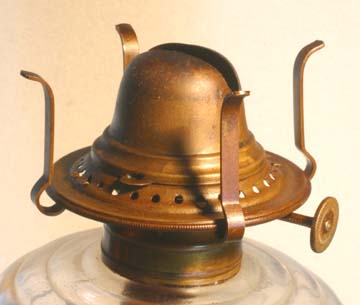
Single Flat Wick. This example made by Birmingham Brass Co., Conn. USA for a bedside light. It is still complete with dome shielding the wick, vents to allow air inside the glass chimney and four clips to secure the chimney itself.
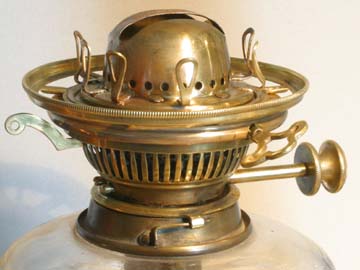
Duplex - two flat wicks. This arrangement was originally patented by Hinks in 1865 to give double the light from a burner with efficient combustion. This photo shows the two concentric-shaft wick height adjusters on the right, the extinguisher lever on the left and the gallery lifter projecting forwards. The chimney used with a duplex burner has an enlarged oval section to suit the flame shape.
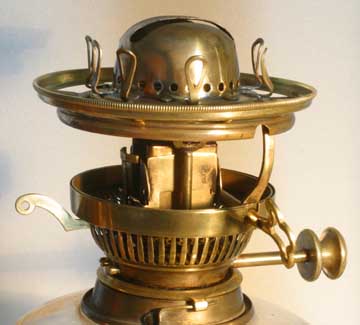 Showing the gallery lifted to full height by rotation of the lifter lever. This allows the wicks to be lit without the need to remove the glass chimney. It also shows the leaves of the extinguisher that rise to put out the lamp.
Showing the gallery lifted to full height by rotation of the lifter lever. This allows the wicks to be lit without the need to remove the glass chimney. It also shows the leaves of the extinguisher that rise to put out the lamp.
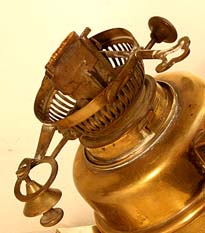
This is a Hinks burner with the gallery removed to show the extinguisher leaves. Here they are operated by a side lever with ring that may be operated by the suspended cone to extinguish the burner if the lamp is accidentally tilted.
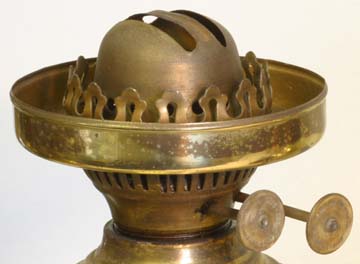
This is a simple duplex burner, made by Samuel Heath & Sons. (SHS). There are two separate wick winder buttons. The light is easily extinguished by the traditional technique of blowing down the chimney.
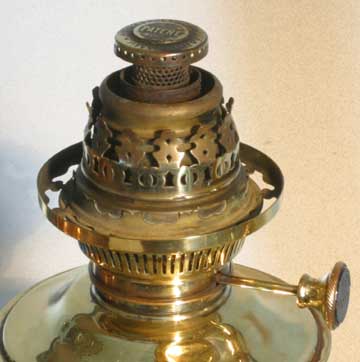
'Wizard' circular burner marketed by Falk Stadelmann. Most circular burners had a central tube from below the fount to allow combustion air to come up inside the wick for efficient burning. This system requires that the burner is surmounted by a flame spreader. Frequently the spreader is found to be missing from second hand lamps and must be replaced before the burner is usable.
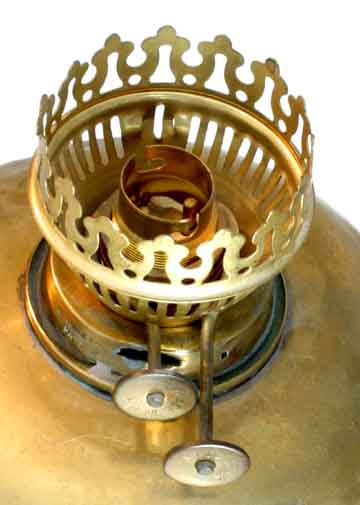
Dummy burner purpose made to allow the fitting of an electric light bulb. The two dummy wick winders are on shafts cranked round the light fitting. By using this type of fitting it is possible to convert a lamp for electricity and retain the old oil burner separately. Best practice is to avoid drilling the fount to allow the cable through since this can be difficult to repair when restoring oil lamps back to original condition.
After